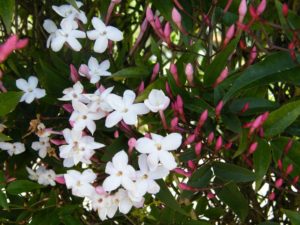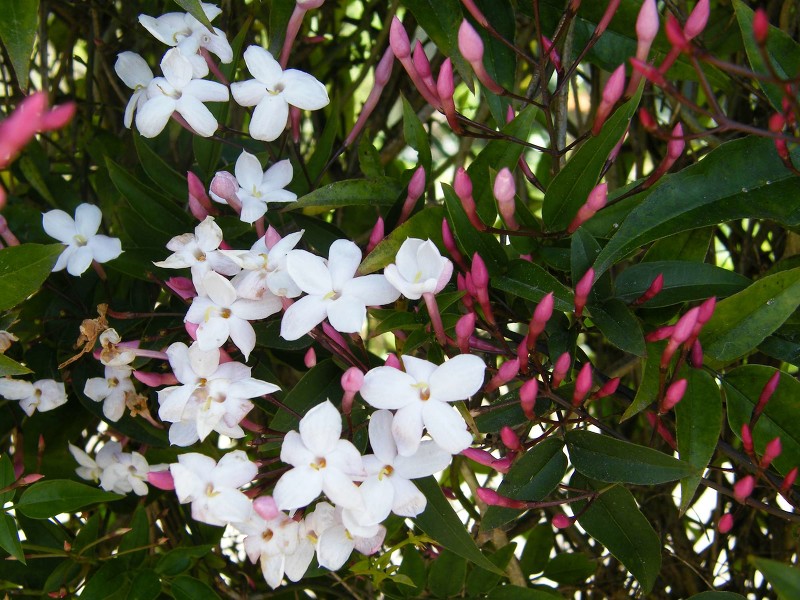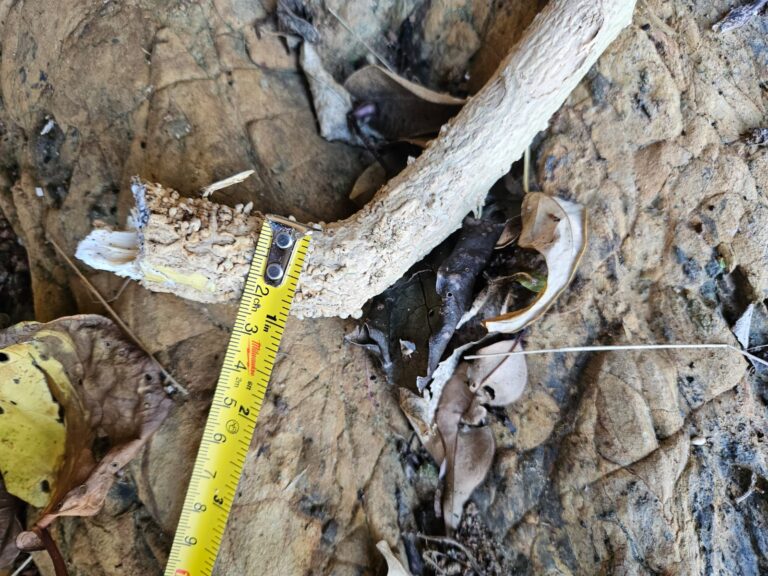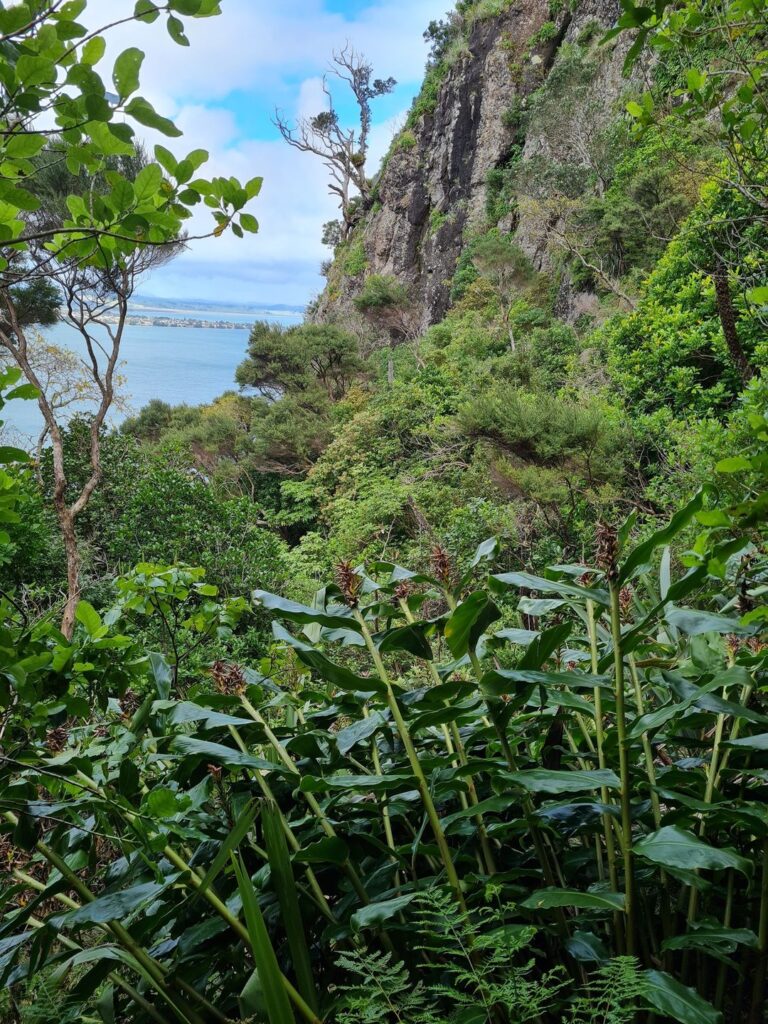 Jasminum polyanthum
Jasminum polyanthum
Just want to know how to kill it?
Skip to control methods
What does it look like?
This is an evergreen climbing vine that grows up to mid-canopy height. It has very long, non-woody, round, tough, stems that root at the nodes. Smooth edged leaves are arranged in opposite pairs on stems, and are divided along the midvein into usually 7 leaflets with the terminal leaflet (up to 7 x 2.5 cm) the largest. Leaves are dark green when mature, new growth is tinged with red. It has masses of highly scented, small white tubular flowers, mainly in spring followed by occasional glossy black fruit.
Why is it a problem?
Highly shade tolerant vine which grows rapidly over forest floor, and into the canopy, forming dense, long-lived masses that smother and kill all plants from ground level to medium to high canopy. Stems layer profusely and runners spread long distances over tough sites under buildings, rocks, and so on. Ingress into established forest is rapid via ground or canopy. High shade tolerance means it can flower under full canopy, and tolerates drought, damp, wind, salt, differing soil types, and damage. Extremely hard to kill.
How does it spread?
Birds readily spread seed where it is produced, but most spread is from fragments dumped in greenwaste and by runners from garden infestations at bush margins. Very rapid growth from stem fragments.
How much of it do we have on the Whangarei Heads Peninsula?
Jasmine infestations are quite localised around the Heads because it does not produce much seed. Infestations are usually concentrated around gardens, and on bush margins and roadsides where garden waste has been dumped. Where infestations do occur they are frequently extensive. These infesations are of particular concern where they occur at bush margins and are rapidly infiltrating the bush.
What can we DO about it at Whangarei Heads?
Jasmine is very hard to kill once established so the best thing to do is to ensure you don’t introduce it to your property, deliberately or accidentally, and ensure that you dispose of your garden waste responsibily if you have it at your place. Controlling infestations thoroughly when small and following up until eradicated will also save significant effort, focusing first on keeping it out and away from bush areas. For large well established infesations control is still achieveable, the approach just needs to be tactical, moving in a rolling front and undertaking the necessary follow up to ensure complete kill at the retreating margin.
Check out the control methods below:
How do I control it?
Special disposal notes: Spread primarily by garden dumping. Dispose of appropriately.
- Manual control difficult due to growth form (stems root wherever they contact the ground). Vines can be progressively rolled up, and disposed at a refuse transfer station, or by drying thoroughly and composting, or drying and burning, or burying deeply. Stem fragments left in soil after rolling will re-sprout, and then these can be manually pulled (or followed up with herbicide methods below). Intensive follow up required to locate and pull regrowth from any remaining stem fragments.
- Prune vines as close to original stem as possible, then immediately treat cut stem with (5g metsulfuron + 1ml penetrant/1L water), or (250ml Banvine® + 10ml penetrant/1L water). Dispose of all cut stems at a refuse transfer station, or by drying thoroughly and composting, or drying and burning, or burying deeply.
- Cut back & spray regrowth (wait for healthy, mature foliage) with (5g metsulfuron+10ml penetrant/10L water), or (120ml Banvine® + 10ml penetrant/10L water).
Not prolific seed production – spread largely through dumped garden refuse. Very rapid growth from stem fragments. Once established it is hard to kill & dispose of – prioritise preventing spread into new areas. Most infestations will require several follow-up treatments.
CAUTION: when using any herbicide or pesticide PLEASE READ THE LABEL THOROUGHLY to ensure that all instructions and safety requirements are followed.
Click here for more information on the herbicides referenced in the control methods, or here for more information on the suggested techniques.
Photos of jasmine
Save



